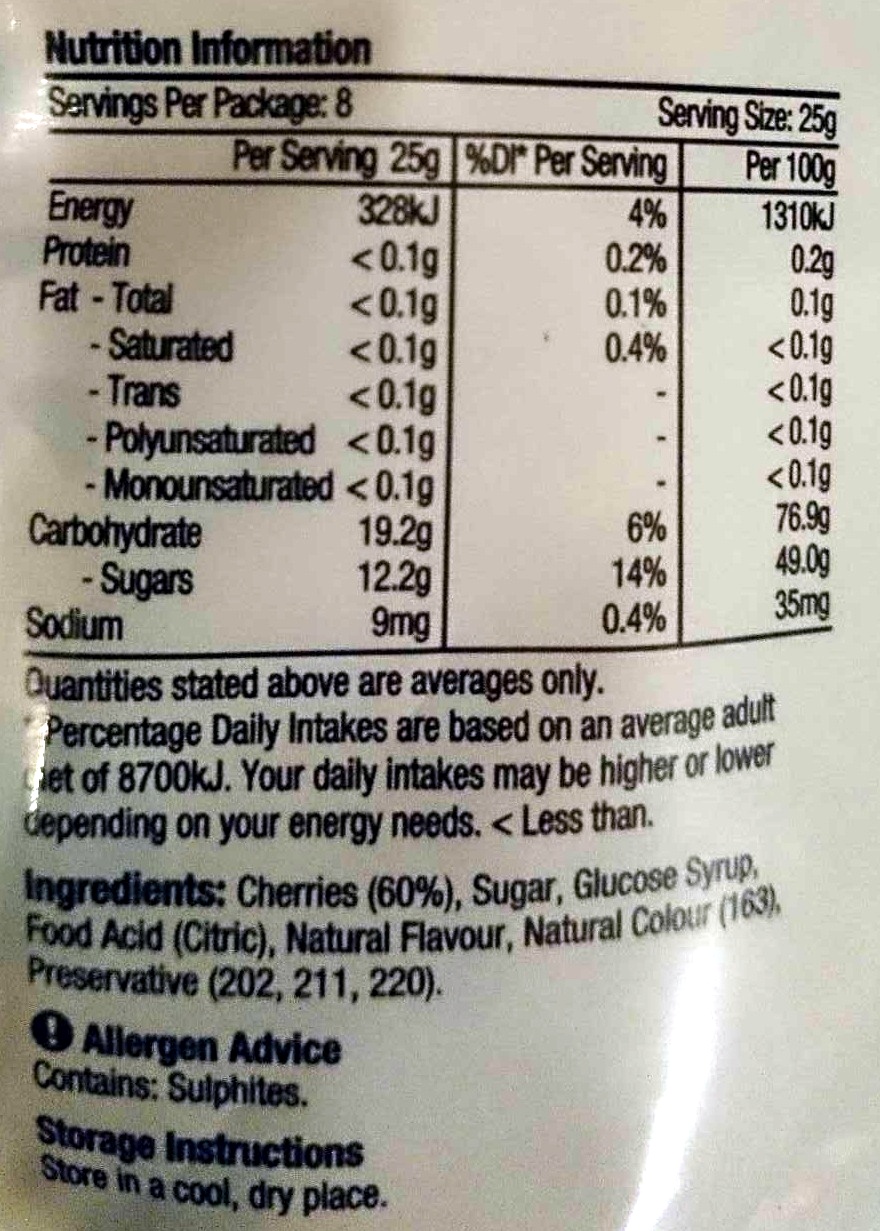Glace Cherries - Woolworths - 200g
This product page is not complete. You can help to complete it by editing it and adding more data from the photos we have, or by taking more photos using the app for Android or iPhone/iPad. Thank you!
×
Barcode: 9300633607616 (EAN / EAN-13)
Quantity: 200g
Packaging: Pouch flask
Brands: Woolworths, Homebrand
Categories: Glace Cherries
Origin of ingredients: Thailand, Imported Unknown
Manufacturing or processing places: Thailand
Stores: Woolworths
Countries where sold: Australia
Matching with your preferences
Environment
Packaging
Transportation
Report a problem
Data sources
Product added on by foodorigins
Last edit of product page on by packbot.
If the data is incomplete or incorrect, you can complete or correct it by editing this page.










